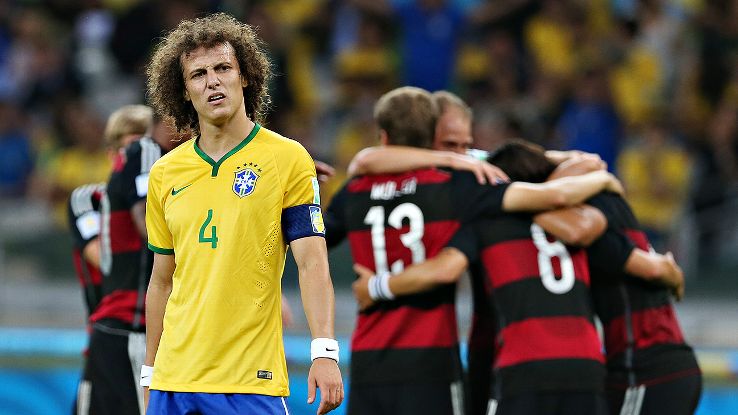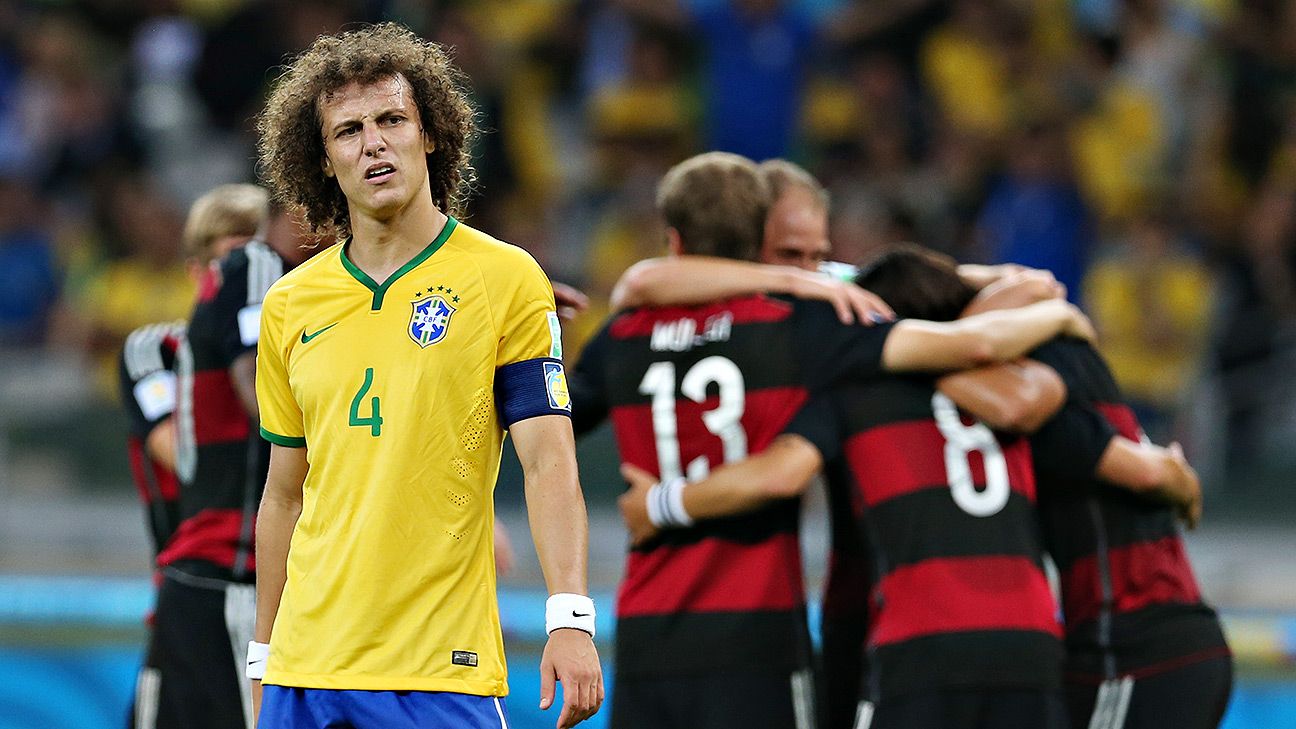Products You May Like



In these long months without football, there is a natural tendency to search for a happy space, to relive glorious moments from the past.
Brazilian TV has certainly been indulging in the temptation. No other country can surely have been replaying too many matches from the Confederations Cup, but Brazil have won it so many times that such games can be wheeled out once more and used as morale boosters. The country has also relived the World Cup triumphs of 1994 and 2002.
– ESPN+: Stream ESPN FC TV daily and 30 for 30: Soccer Stories
– Insider Notebook: United battle Liverpool for Werner
True, all the games from the 1982 campaign also got an airing, when the team fell before the semifinals despite playing some wonderful football. But that is too far back for the memories to hurt — and anyway the team are back in fashion as Brazil looks for a weapon to counter the idea that Barcelona have some kind of monopoly on stylish play.
It was a brave choice, then, to go back just six years and revisit the 2014 World Cup — a campaign entirely without a feel-good factor for the hosts. SporTV, TV Globo’s cable channel, has been screening Brazil’s games, culminating with Sunday’s showing of the infamous 7-1 semifinal massacre at the hands of Germany — one of the most jaw droppingly astounding scorelines in the history of the World Cup.
It is a result that can only really be understood in the context of the competition. Brazil went into the tournament full of confidence — their vastly experienced supervisor Carlos Alberto Parreira said they had “one hand on the trophy” when the squad met up to start their preparation.
The story is one of how that confidence drained away under pressure; the streaky debut win over Croatia could be put down to first night tension. The goalless draw against Mexico really got the nerves jangling. Perhaps they were not as good as they had thought? Going into the knockout stages, home advantage was looking more like disadvantage. The fear of letting down the crowd was too great. With Neymar injured and Thiago Silva suspended, the emotional collapse they suffered against Germany was painful. Even Fernandinho, the eternal mister reliable, had turned into a liability.
It is fair to assume that had the teams met in different circumstances, outside the pressures of the World Cup, the scoreline would have been different. But Germany would still be more likely to win the game — they had a better team. Moreover — and this is the especially worrying aspect — they moved the ball with the competence, fluidity and even the sense of joy that traditionally has been a proud characteristic of the Brazilian game. Even making every allowance for the emotional circumstances in which the game was played, there was plenty for Brazil to dwell on long after the floodlights had been switched off in the Mineirao stadium.
It is fair to argue that losing the 1950 World Cup on home soil was an important learning experience. Playing in the old WM system, the team had lacked defensive cover when it mattered most, when Uruguay‘s right winger Alcides Ghiggia got away twice, setting up one goal and scoring the other. The response was the creation of the back four, withdrawing an extra player to the heart of the defence. It was unveiled in 1958, when Brazil won the World Cup with a defence so tight that they did not concede a single goal until the semifinal.

What did the Selecao learn from the 2014 debacle then?
The initial response was one of denial. Dunga was recalled for a second spell as national team coach. The snarling high priest of the counter-attack, he had nothing to offer, and was sacked two years later after a poor start to the next set of World Cup qualifiers and early elimination in the Copa Centenario.
What followed came a progressive move with the appointment of Tite, who remains in charge. He is the outstanding current Brazilian coach in part because of his capacity to learn. He took time off to study top level western European football, and especially the way that teams such as Germany were able to create numerical superiority in the opponent’s half of the field. Much of this has to do with the team staying compact, which requires a high defensive line. Tite was an immediate success with Brazil, turning a difficult qualification campaign into a victory parade — and their newly rediscovered fluency was a consequence of pushing the defence higher up the field.
The last two years, however, have not been quite as good for Brazil’s coach. His team were not at their best in Russia 2018 — though they were much better than they had been four years earlier, and probably deserved a chance to go into extra-time in the wonderful quarterfinal they lost to Belgium. Last year, they managed to win the Copa America on home ground, but were rarely tested and then went on a run of five games without a win.
The enforced pause for the coronavirus may help Tite get back on track. It would certainly be unwise to rule them out of contention for the next World Cup — and it is impossible to imagine them collapsing as they did against the Germans.
The club game, meanwhile, took much longer to react. For a while it appeared that as long as Brazilian club won the Copa America, then all was right with the world. It was only in the second half of last year that something different emerged. Flamengo of Rio hired veteran Portuguese coach Jorge Jesus, who brought with him the methods of contemporary European football. In wonderful swashbuckling style, his team won the Brazilian and South American titles and went down with credit to Liverpool in the final of the Club World Cup. With the lines of the team close together, Flamengo were fluid in possession, with quick passing exchanges creating space for the individual talent of the strikers to shine.
But Jorge Jesus had to dig deep to find centre-backs to fit his scheme, players with enough speed and quality to play in a high line. One came from Spain, Pablo Mari, who has since been snapped up by Arsenal. And his partner, Rodrigo Caio, had been seen by his previous club as more of a midfielder than a centre-back. The problem — as the Flamengo boss has been finding this year in the absence of Mari — is the lack of centre-backs able to play this way.
Those with the potential to operate in a high line are quickly lured to Europe. And most Brazilian centre-backs are big, slow sheriffs of the penalty area, there to head and kick the ball away. They are the product of a culture based on fear; club coaches looking to protect their jobs by avoiding defeat and defensing deep, youth team coaches wanting to build a reputation with short term results and selecting the biggest defenders to hold the fort.
Until this changes — until Brazil produces more centre-backs who can be part of a compact, fluid team — then the 7-1 is a dreadful warning as well as a painful memory.
